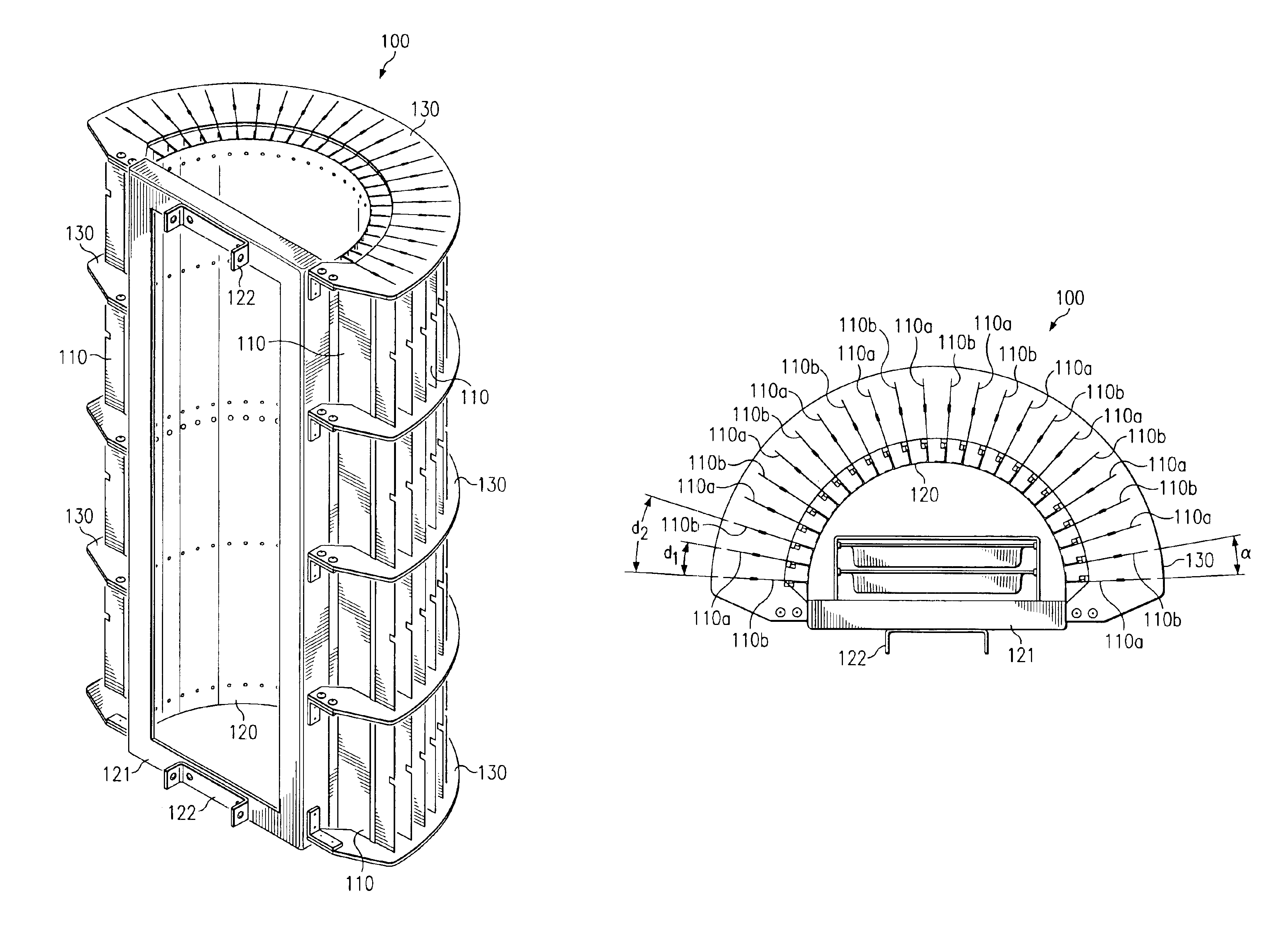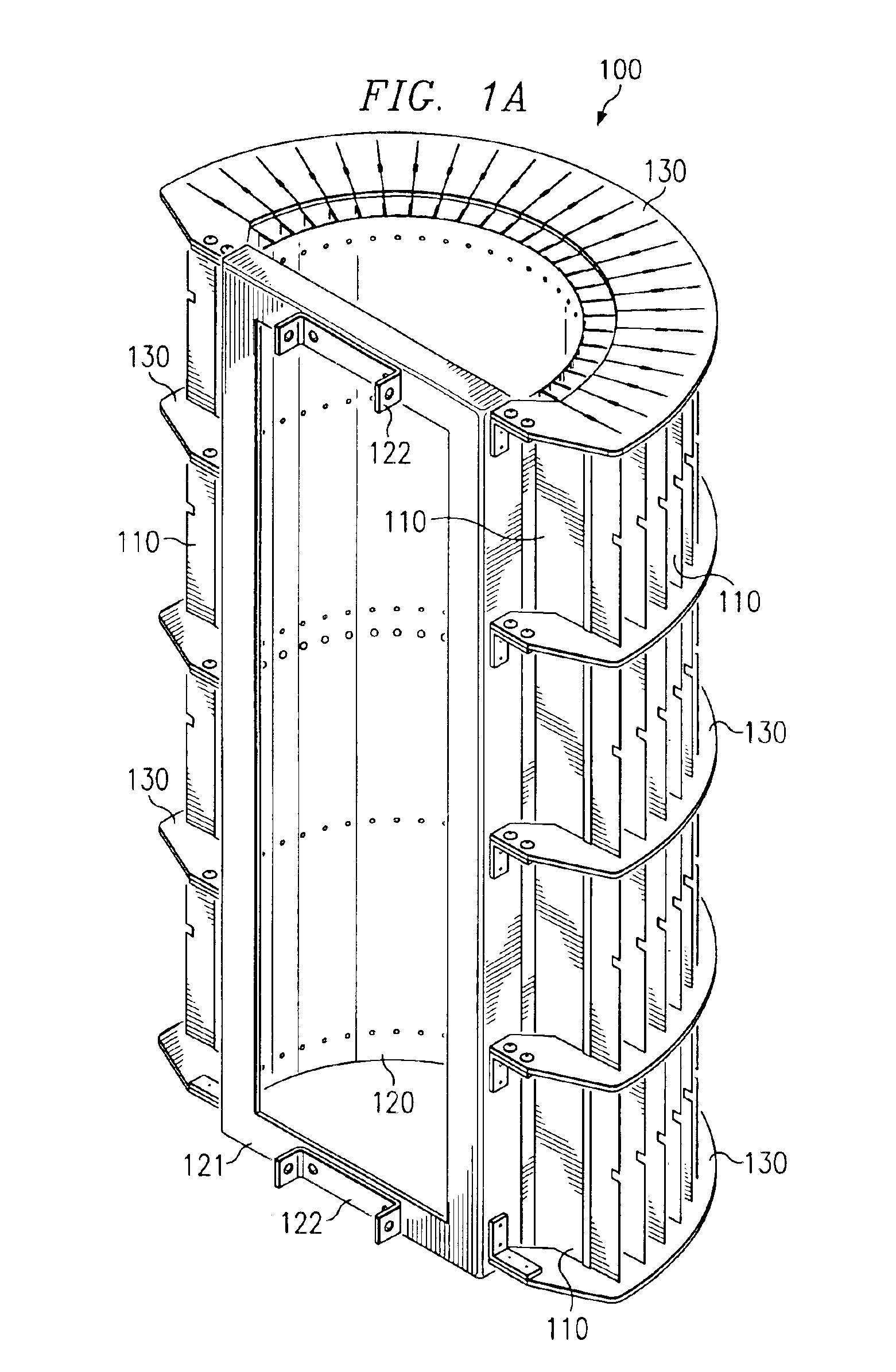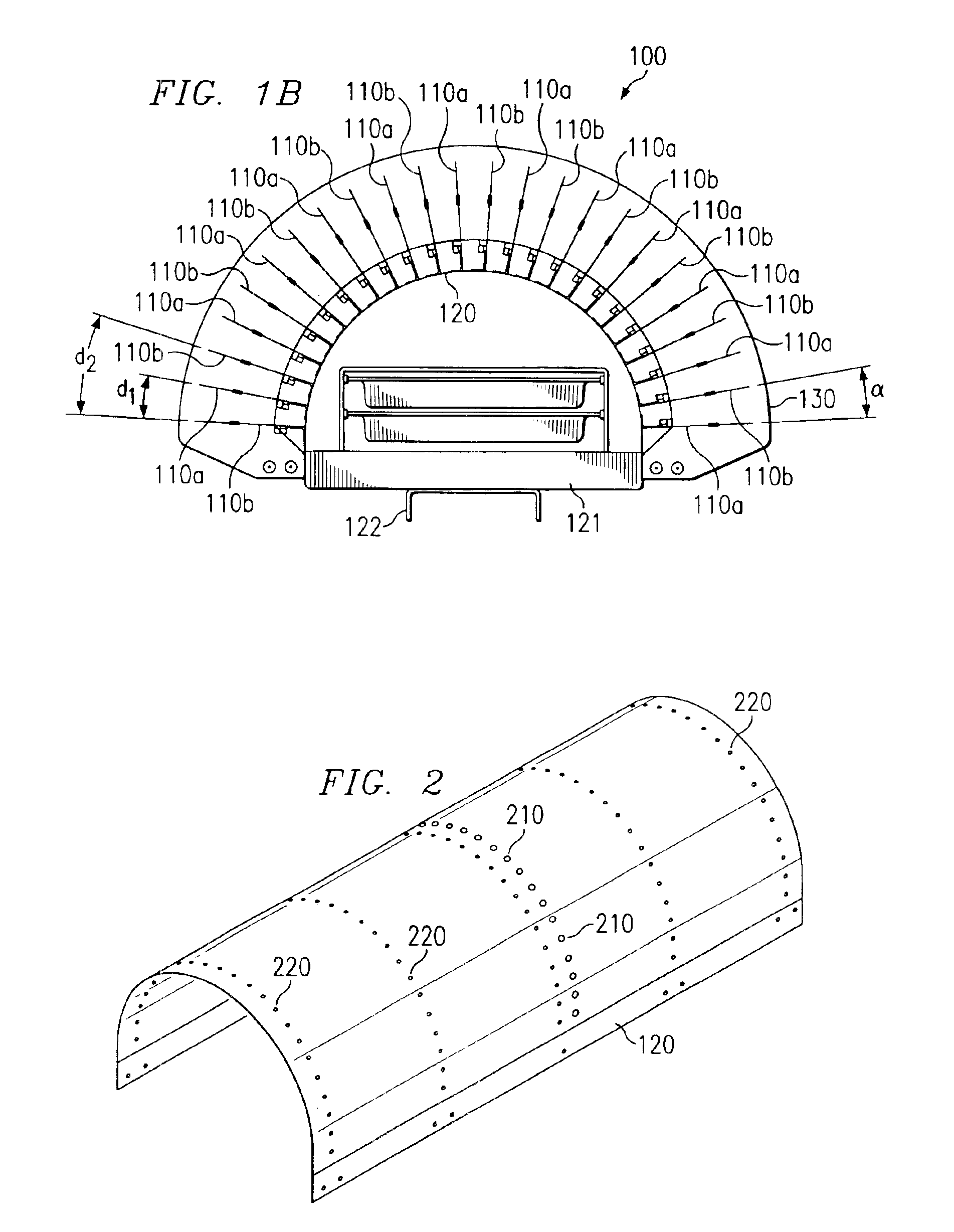Co-located antenna array for passive beam forming
- Summary
- Abstract
- Description
- Claims
- Application Information
AI Technical Summary
Benefits of technology
Problems solved by technology
Method used
Image
Examples
Embodiment Construction
[0027]Directing attention to FIGS. 1A and 1B, a preferred embodiment antenna array configuration is shown as antenna array 100. Antenna array 100 of the illustrated embodiment includes a plurality of antenna element assemblies 110, each including one or more antenna elements. According to a preferred embodiment, antenna element assemblies 110 each comprise a plurality of individual antenna elements, such as dipole, log-periodic, Yagi, slotted-waveguide, patch, helical, horn, and / or like antenna elements, forming an antenna element column.
[0028]Antenna element assemblies 110 are preferably disposed in a predetermined orientation to define an antenna array. Accordingly, antenna elements of the illustrated embodiment are coupled to shell 120, providing a cylindrical configuration in the illustrated embodiment. Shell 120 preferably provides mechanical support for antenna element assemblies 110. Accordingly, shell 120 includes frame 121 and mounting bracket 122 to provide rigidity and / or...
PUM
 Login to View More
Login to View More Abstract
Description
Claims
Application Information
 Login to View More
Login to View More - R&D
- Intellectual Property
- Life Sciences
- Materials
- Tech Scout
- Unparalleled Data Quality
- Higher Quality Content
- 60% Fewer Hallucinations
Browse by: Latest US Patents, China's latest patents, Technical Efficacy Thesaurus, Application Domain, Technology Topic, Popular Technical Reports.
© 2025 PatSnap. All rights reserved.Legal|Privacy policy|Modern Slavery Act Transparency Statement|Sitemap|About US| Contact US: help@patsnap.com



